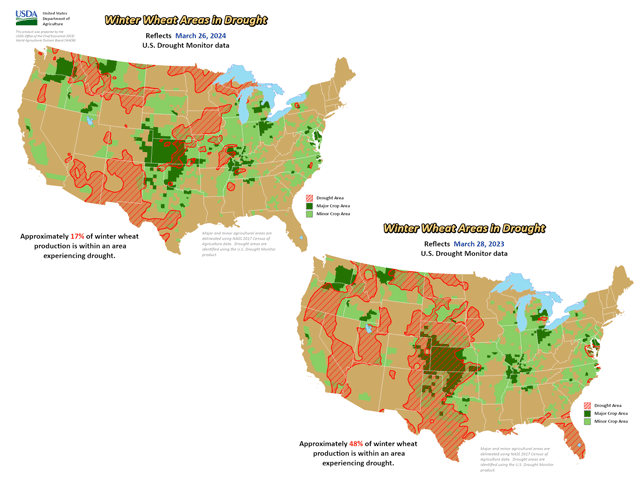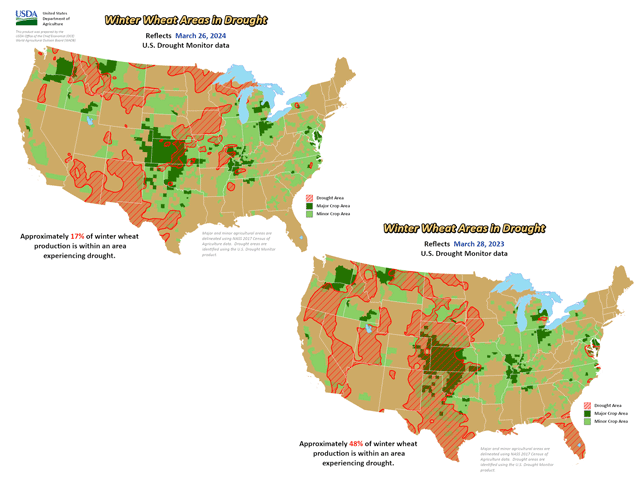Ag Weather Forum
Winter Wheat Received a Big Boost From El Nino Moisture
What a difference a year makes. USDA's weekly Ag in Drought analysis feature, which matches U.S. Drought Monitor assessments with crop acreage and production regions, shows a dramatic decrease in drought coverage over the major winter wheat regions of the country in early spring 2024 compared to the same period in 2023.
The Ag in Drought update for March 26, 2024, shows just 17% of U.S. winter wheat areas in drought. That coverage portion is far less than half the drought coverage a year ago; at the end of March 2023, 48% of the U.S. winter wheat regions were assessed as being affected by drought.
P[L1] D[0x0] M[300x250] OOP[F] ADUNIT[] T[]
That reduction in drought coverage corresponds to winter wheat crop conditions which are robust in comparison to last year.
The total good-to-excellent U.S. winter wheat rating in the April 1 USDA NASS weekly national Crop Progress report was 56%, exactly double the good to excellent total of a year ago. This figure is also the highest for the first report of the season in five years. And, not coincidentally -- 2019 was the most recent year that El Nino was in effect in the Pacific Ocean during the U.S. winter season.
The biggest improvement in winter wheat conditions is noted in the Southern Plains, where early-April winter wheat condition reports show Texas at 44% rated in good-to-excellent condition, 73% of the Oklahoma wheat crop rated good to excellent, and 48% of the Kansas wheat crop rated good to excellent. At the same time a year ago, those good-to-excellent totals came in at just 18% in Texas, 26% in Oklahoma and 16% in Kansas. While the early-spring winter wheat conditions are relatively strong, additional precipitation will be needed to maintain crop prospects. Most of the Southern Plains wheat areas received less than 1 inch total precipitation in March, generally 80% or more below normal. That makes the rain chance during the next week to 10 days very important for the region. DTN forecasts call for total precipitation of 0.5-1.5 inches in Kansas and Oklahoma wheat areas, and 0.25-1 inch with locally heavier amounts over the wheat areas in Texas.
Wheat is entering the jointing stage in Kansas; well into jointing in Oklahoma; and entering the heading stage in Texas. This additional moisture will be needed to maintain the high production potential that the El Nino-related drought improvement suggests at the start of this spring.
Bryce Anderson can be reached at Bryce.Anderson@dtn.com
(c) Copyright 2024 DTN, LLC. All rights reserved.





Comments
To comment, please Log In or Join our Community .